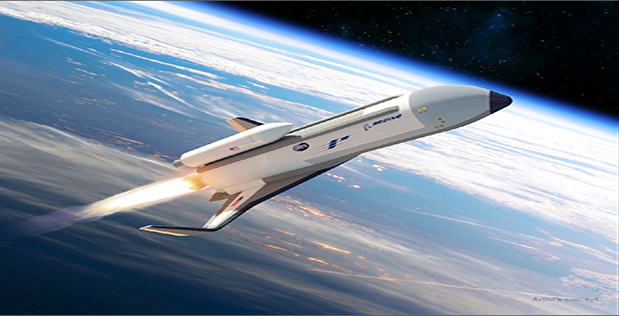Boeing and DARPA join forces on space plane program
US defence research agency DARPA and Boeing are to collaborate on the production of an experimental space plane designed to enable on demand affordable access to space.

Dubbed Phantom Express, the hypersonic aircraft is being developed under DARPA’s Experimental Spaceplane (XS-1) program. According to the agency, it could radically reduce the cost of putting a satellite in orbit and bolster the ability to recover from the unexpected loss of critical military and commercial satellites.
Roughly the size of a business jet, the unmanned aircraft will take off vertically like a rocket and fly to hypersonic speeds. Once it reaches the edge of space, it will release an expendable second stage able to deploy a satellite. The reusable first stage would then bank and return to Earth, landing horizontally like an aircraft, and be prepared for the next flight.
“Phantom Express is designed to disrupt and transform the satellite launch process as we know it today, creating a new, on-demand space-launch capability that can be achieved more affordably and with less risk,” said Darryl Davis, president, Boeing Phantom Works.
Register now to continue reading
Thanks for visiting The Engineer. You’ve now reached your monthly limit of news stories. Register for free to unlock unlimited access to all of our news coverage, as well as premium content including opinion, in-depth features and special reports.
Benefits of registering
-
In-depth insights and coverage of key emerging trends
-
Unrestricted access to special reports throughout the year
-
Daily technology news delivered straight to your inbox










Water Sector Talent Exodus Could Cripple The Sector
Maybe if things are essential for the running of a country and we want to pay a fair price we should be running these utilities on a not for profit...